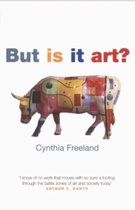Bicycle Wheel
Marcel Duchamp
, Marcel Duchamp was born in Normandy, France in 1887. He studied at the Académie Julian in Paris
from 1904 to 1905. The Académie Julian was an alternative school to the official Ecole des Beaux Arts
in Paris (Tate, 2017a). Marcel Duchamp came from a very talented and artistic family (Tate, n.d.). His
brother Gaston Duchamp also attended the Académie Julian and became a famous painter, better
known as Jacques Villon (Artnet, 2020). His other brother is the cubist sculptor Raymond Duchamp-
Villon (Tate, n.d.).
Marcel Duchamp took favour to the cubism movement, which started in the early years of the
twentieth century. During the first period of Cubism, the unravelling and analysis of forms was the
focus of attention. A cubist artist preferably painted still lives and portraits. He worked in geometric
compositions, with monotonous earth tones such as brown, grey, ochre and green. The artist viewed
its subject from all sides and once on the canvas, the painting makes a flat and shallow impression
without perspective. The background was as important as the objects in the front. As a consequence,
objects and portraits were treated as fragmentarily as the interspaces. This period is called Analytical
Cubism (De Kunstkijker, 2013).
During the second period of Cubism from 1912 until 1914, the artists included pieces of newspaper,
paper, rope and other materials in their paintings. In the cubist paintings and collages created in this
period, the merging of different forms and material fragments was central. Artists used more shapes
and colour than the different shades of browns, ochre, grey and green in the analytical cubism
period. That is why this period is called Synthetic Cubism (Angel & Hertog, 2012, p. 95).
In 1912 Duchamp made the painting Nu Descendant un escalier No. 2. This painting shows a
sequence of human movements. It is probably Duchamp’s most notorious painting. According to the
Cubists, the title of the painting told the viewer what happened in the painting. The painting was
considered to deviate too much from Cubism, especially because in the French movement of Cubism,
no movement was allowed in the painting. According to the Cubists, the title of the painting told the
viewer what happened in the painting. They asked Duchamp to change the title, but he refused, with
Marcel Duchamp
, Marcel Duchamp was born in Normandy, France in 1887. He studied at the Académie Julian in Paris
from 1904 to 1905. The Académie Julian was an alternative school to the official Ecole des Beaux Arts
in Paris (Tate, 2017a). Marcel Duchamp came from a very talented and artistic family (Tate, n.d.). His
brother Gaston Duchamp also attended the Académie Julian and became a famous painter, better
known as Jacques Villon (Artnet, 2020). His other brother is the cubist sculptor Raymond Duchamp-
Villon (Tate, n.d.).
Marcel Duchamp took favour to the cubism movement, which started in the early years of the
twentieth century. During the first period of Cubism, the unravelling and analysis of forms was the
focus of attention. A cubist artist preferably painted still lives and portraits. He worked in geometric
compositions, with monotonous earth tones such as brown, grey, ochre and green. The artist viewed
its subject from all sides and once on the canvas, the painting makes a flat and shallow impression
without perspective. The background was as important as the objects in the front. As a consequence,
objects and portraits were treated as fragmentarily as the interspaces. This period is called Analytical
Cubism (De Kunstkijker, 2013).
During the second period of Cubism from 1912 until 1914, the artists included pieces of newspaper,
paper, rope and other materials in their paintings. In the cubist paintings and collages created in this
period, the merging of different forms and material fragments was central. Artists used more shapes
and colour than the different shades of browns, ochre, grey and green in the analytical cubism
period. That is why this period is called Synthetic Cubism (Angel & Hertog, 2012, p. 95).
In 1912 Duchamp made the painting Nu Descendant un escalier No. 2. This painting shows a
sequence of human movements. It is probably Duchamp’s most notorious painting. According to the
Cubists, the title of the painting told the viewer what happened in the painting. The painting was
considered to deviate too much from Cubism, especially because in the French movement of Cubism,
no movement was allowed in the painting. According to the Cubists, the title of the painting told the
viewer what happened in the painting. They asked Duchamp to change the title, but he refused, with





